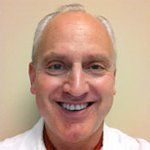Things We Learned This Year
Gentle reader, the hour is late. As the poet said, almost all of the grains of sand allotted to 2016 have sifted down onto the pyramid of memory. Before this year’s hourglass empties, though, let’s take a moment to reflect on some of the phenomena we observed during the past months in this esoteric branch of medicine.
Craig R. Hildreth, MD

Gentle reader, the hour is late. As the poet said, almost all of the grains of sand allotted to 2016 have sifted down onto the pyramid of memory. Before this year’s hourglass empties, though, let’s take a moment to reflect on some of the phenomena we observed during the past months in this esoteric branch of medicine.
1. We were amazed to see new immuno-oncology agents such as checkpoint inhibitors stop tumors from growing and return patients to their old lives. Who knew that incorrigible diseases such as lung cancer could be pacified, or that the phrase “durable response” would be used to describe treatment results for metastatic melanoma?
2. The proliferation of new oral agents has also created a new barrier to their effectiveness, called “financial toxicity.” Extraordinarily high copayments, out-of-pocket costs, and pharmacy benefit limitations have thwarted the chance to try these innovative drugs, or the length of time they can be taken. Cancer Moonshot Task Force, are you listening?
3. New buzzwords abounded, like “mutational load” (the more somatic mutations a tumor creates, the better the response to a checkpoint inhibitor), “total neoadjuvant therapy” (giving both chemotherapy and chemoradiotherapy preoperatively in order to improve the surgical outcome), and my personal favorite, “oligometastatic disease,” which refers to non–small-cell lung cancer patients with no more than five metastases. How did this term become hip? Because if you give chemoradiotherapy to the primary and either irradiate (using stereotactic or high-dose external beam radiation therapy) or excise the metastases, the survival curve over time never reaches zero, or as we like to say to these lucky folks, “You’re cured.”
4. The immune-oncology pipeline is flowing like a river after the deluge. You say you’re worried that we have only one CDK4/6 inhibitor (palbociclib) for our breast cancer patients? Fear not! Ribociclib and abemaciclib are both in the latter stages of clinical development. Concerned that the supply of nivolumab, pembrolizumab, and atezolizumab may fizzle out? Waiter, bring me pidilizumab, durvalumab, avelumab, and shad roe! (…with apologies to Cole Porter). Say, far be it from me to be cynical but just how many of these immune-oncology drugs do we need on the shelf anyway?
5. Biomarkers can be either frustratingly inaccurate in predicting success (cf, VEGF inhibitors), or breathtaking in their ability to identify patients who will benefit. The most vivid example to date is using pembrolizumab as first-line therapy in non–small-cell lung cancer patients with 50% to 100% staining for the biomarker PD-L1. Bets are being placed across the nation on when the overall survival curve will drop below 50%-will it be 2 years, or longer? At what point will the curve plateau, meaning that all alive from that date forward can erase “lung cancer” on their personal list of possible causes of death?
6. Despite all of the advances in treatments harvested from our decoding of the genome, many patients still seek out alternative treatments, most of which have no proven benefit, or are still percolating in Petri dishes, or doing a bang-up job curing mice of cancer. For example, the decriminalization of marijuana has awakened patients to the possibility of success with various cannabinoid products, and indeed 13 different cannabinoids are currently under scientific study, but none are ready for approval in humans. Patients who are taking easily obtainable supplements and other natural products need expert counseling in order to minimize the risk of complications-and heartbreak.
These are just a few of the many developments and wonderments appearing in the oncology universe. They are delightful to list, but lest we forget our purpose here, advances in the treatment of cancer only have value when someone sits down with a patient and after a long talk, asks, “Are you ready to get started? Then this is the day the cancer begins to die.”
How Supportive Care Methods Can Improve Oncology Outcomes
Experts discussed supportive care and why it should be integrated into standard oncology care.